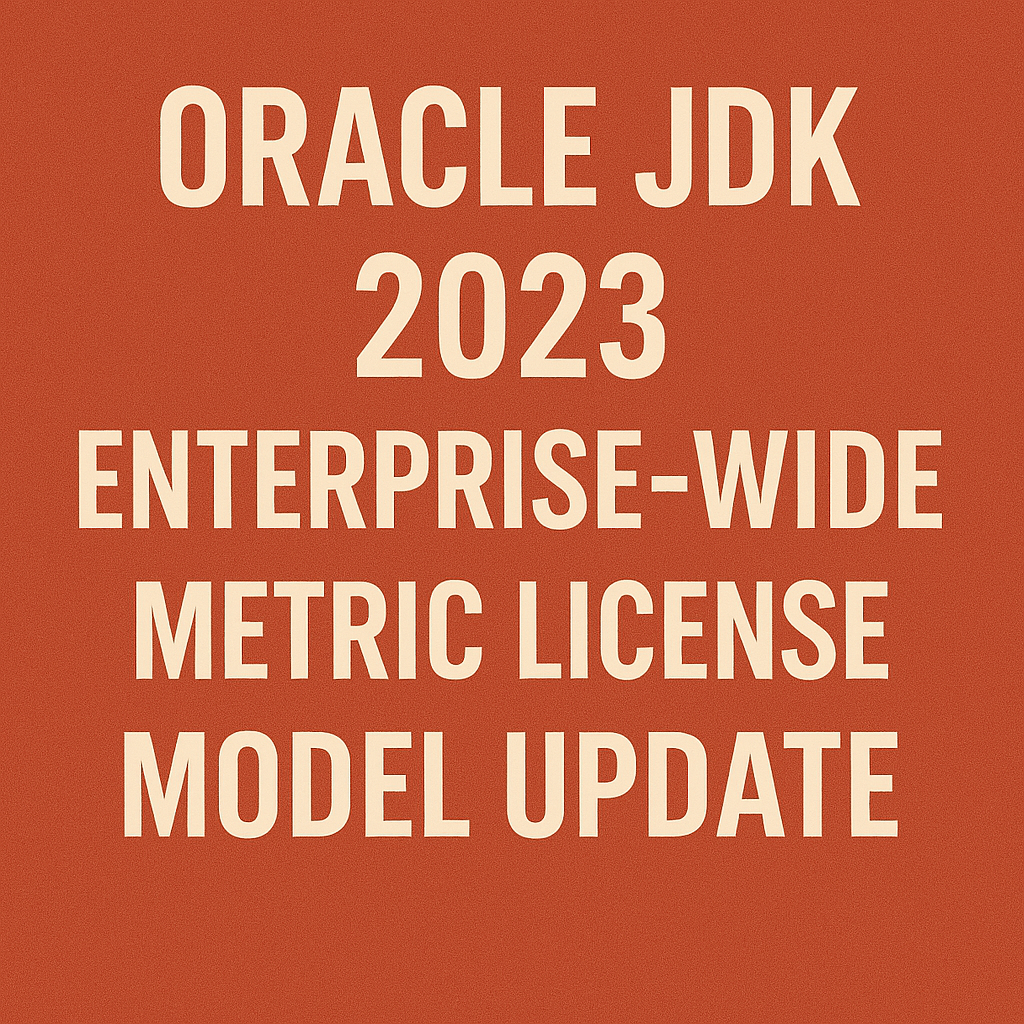
Oracle JDK 2023 Enterprise-Wide Metric License Model Update
Oracle has significantly updated its JDK licensing structure in 2023 by introducing the Enterprise-Wide Metric License Model.
Here’s a detailed, comprehensive breakdown of the top 10 key aspects you need to understand to navigate this change effectively:
1. Introduction of the Enterprise-Wide Licensing Model
Oracle shifted from traditional user-based or processor-based licenses to an organization-wide licensing model. Under this new model, licensing is calculated based on the total number of employees (Full-Time Equivalent or FTE) in your enterprise, regardless of how many actively use Oracle JDK.
Example:
A company employing 20,000 staff previously licensing Oracle JDK for just 1,000 users now needs licenses based on all 20,000 employees.
2. Licensing Scope and Coverage
The new Java licensing model applies to all Java deployments within the organization, removing previous limitations tied to specific processors or user counts. It covers every employee under a single, organization-wide metric.
Key Points:
- The entire organization is licensed regardless of actual Java use.
- Covers both direct and indirect Java usage within your enterprise.
3. Financial Predictability and Budgeting
This new licensing structure offers greater financial predictability due to fixed annual licensing costs based on your organization’s size, rather than fluctuating costs tied to changing deployments or audits.
Advantages:
- Annual budget forecasting becomes easier and more accurate.
- Protects your organization from unexpected audit fees or license true-up charges.
4. Administrative Impact and Resource Allocation
Under the enterprise-wide licensing model, administrative overhead significantly decreases, as organizations no longer need to monitor and manage Java usage by individual users or devices meticulously.
Administrative Benefits:
- Eliminates detailed tracking of Java users or processors.
- Enables IT teams to allocate time and resources towards strategic initiatives rather than licensing administration.
5. Potential for Higher Overall Costs
The shift to enterprise-wide licensing might increase costs for companies with limited Java usage. Organizations previously licensing Java for select groups or limited processors may experience a substantial rise in licensing fees.
Example:
- An enterprise previously licensing Java for a few hundred users within a larger organization will now incur licensing costs for the entire employee base.
6. Critical Contractual Definitions
Oracle’s licensing agreements must include precise definitions of terms such as “employee,” “user,” or “contractor.” Defined terms can significantly reduce the risk of disputes and unexpected licensing costs during compliance audits.
Important to Define:
- Inclusion or exclusion of contractors, temporary staff, or part-time workers.
- Specific circumstances might change the employee count, such as mergers or acquisitions.
7. Negotiation Strategies and Contract Flexibility
Organizations should carefully negotiate licensing agreements to include flexibility, precise definitions, and favorable audit terms.
Recommended Negotiation Approaches:
- Phased rollouts of the licensing model to minimize immediate financial impact.
- Terms allowing adjustments for future organizational changes or employee count fluctuations.
- Clearly defined audit procedures and dispute resolution processes.
8. Leveraging Expert Oracle Licensing Advisors
Engaging with Oracle licensing experts during negotiations is critical to ensure favorable terms and reduce financial exposure. Expert guidance helps secure optimal contract conditions and prepares your organization for potential audits or compliance challenges.
Benefits of Expert Advisors:
- Reduction in licensing costs through strategic negotiation tactics.
- Detailed understanding of Oracle’s licensing practices and contractual nuances.
- Mitigation of compliance risks.
9. Audit Preparedness and Proactive Management
Under the new model, organizations must proactively prepare for potential Oracle audits. Clearly defined audit procedures within licensing contracts are essential to avoid costly disagreements.
Audit Best Practices:
- Explicitly document and agree upon audit methodologies and timelines.
- Establish clear procedures for resolving audit-related disputes or disagreements.
- Maintain regular internal reviews to ensure ongoing compliance with Oracle licensing terms.
10. Internal Assessments and Strategic Planning
A comprehensive internal assessment is essential for understanding the impact of Oracle’s new licensing structure. Analyze your current Java deployments, usage patterns, and associated costs against the enterprise-wide model to forecast budget implications accurately.
Steps for Internal Assessment:
- Conduct thorough Java deployment reviews.
- Calculate the licensing cost difference between the existing and new licensing models.
- Develop strategic plans to manage transition risks, including identifying cost-saving opportunities.
Recommended Action Steps:
- Immediately conduct an internal Java usage and licensing assessment.
- Engage licensing experts early in the negotiation phase.
- Clarify contractual terms and ensure flexibility in licensing agreements.
- Regularly review compliance and monitor organizational changes affecting employee counts.
By thoroughly addressing these detailed insights and carefully planning your licensing strategy, your organization can effectively manage Oracle’s JDK Enterprise-Wide Metric License Model, controlling costs and minimizing compliance risks.
